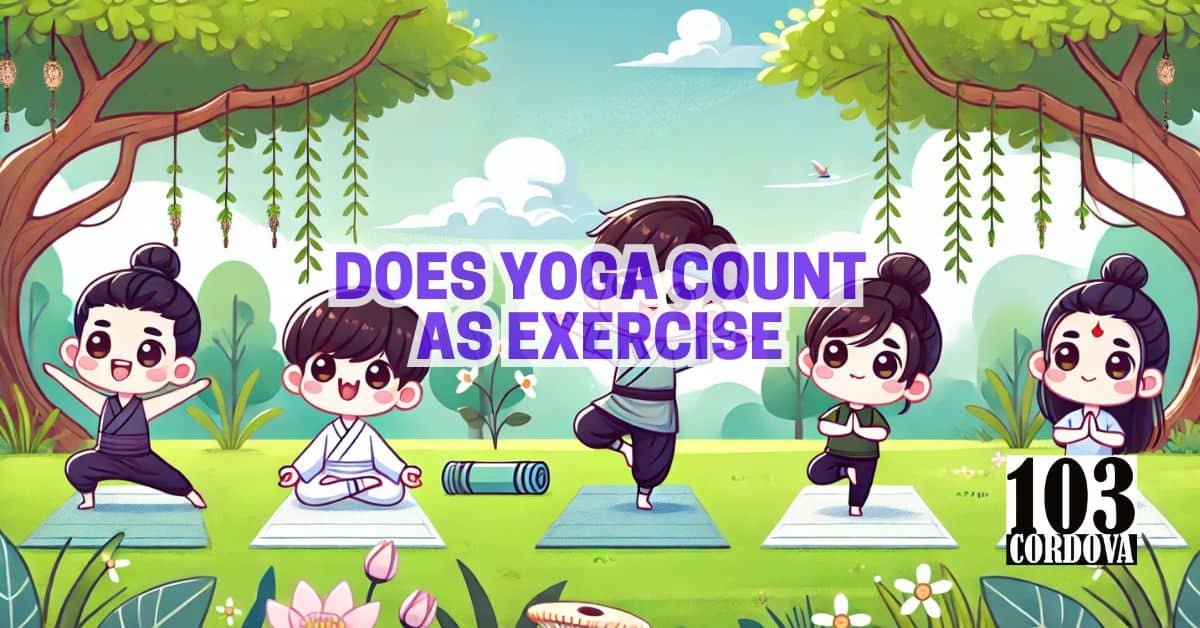Yes, yoga counts as exercise because it involves controlled movement, muscle engagement, and physical effort.
While it may not offer the same level of cardiovascular activity as running or other high-intensity workouts, it provides significant benefits in terms of strength and flexibility.
Yoga uses body weight for resistance, which helps tone muscles and improve balance.
It also enhances joint mobility and supports mental focus through mindful breathing and movement.
We’ll examine how yoga fits into a fitness routine and its effectiveness as a form of exercise.
1. Understanding Yoga as a Form of Exercise
Yoga is more than just stretching; it’s a full-body workout that strengthens muscles and increases mobility.
Different styles of yoga vary in intensity, with some, like Vinyasa or Ashtanga, being fast-paced and physically demanding.
Other styles, like Yin or Restorative, focus more on deep stretches and relaxation, providing a low-impact workout.
The key is that yoga promotes functional strength by engaging multiple muscle groups simultaneously.
By working with your body’s own weight, yoga also builds endurance and improves balance.
🧘 The Surprising Benefits of Laughter Yoga: Stress Relief and Beyond
2. Health Benefits of Practicing Yoga Regularly
Regular yoga practice provides both physical and mental health benefits.
It improves flexibility, allowing for better range of motion in joints, and strengthens muscles, especially in the core, arms, and legs.
Yoga also promotes better posture and alignment, which can prevent injuries in other physical activities.
Mentally, yoga has been shown to reduce stress, improve focus, and create a sense of calm through breath control and mindfulness.
Over time, these combined benefits enhance both physical fitness and emotional resilience.
🧘 Yoga vs. Tai Chi: Which Practice Is Right for You?
3. Yoga vs. Traditional Exercise: Key Differences
Yoga differs from traditional forms of exercise in its emphasis on both physical and mental engagement.
While weightlifting or running typically focuses on specific muscle groups or cardiovascular endurance, yoga integrates breath, movement, and mindfulness into one practice.
Instead of repetitive, isolated motions, yoga encourages fluid transitions between poses, activating the entire body.
This holistic approach also helps build flexibility and balance, which are often neglected in traditional exercise routines.
Additionally, yoga’s meditative aspects foster mental relaxation, offering a well-rounded complement to intense workouts.
🧘 Finding the Right Yoga Class for Kids in Marikina: What Parents Should Look For
4. Creating a Balanced Fitness Regimen with Yoga
To create a balanced fitness regimen, yoga can be used as a complement to other forms of exercise.
Pairing yoga with cardio workouts, such as running or cycling, helps improve endurance and cardiovascular health, while the practice of yoga focuses on flexibility and recovery.
Strength training can also benefit from yoga, as it enhances muscle length and joint mobility, reducing the risk of injury.
A mix of high-intensity workouts and yoga creates a well-rounded fitness plan, offering both physical exertion and mental rejuvenation.
By integrating yoga into your routine, you ensure a holistic approach to fitness that targets multiple aspects of health.
🧘 How a Yoga Class for Kids Can Enhance Social Skills and Friendships
5. Setting Realistic Goals for Your Yoga Practice
Setting achievable goals is important when starting a yoga practice, as it helps maintain motivation without overwhelming yourself.
Begin by focusing on specific objectives, like increasing flexibility in a certain area or practicing mindfulness during each session.
Avoid aiming for perfection in challenging poses right away; instead, prioritize gradual progress and safe practice.
In time, you can increase the intensity or duration of your sessions as your comfort level improves.
Setting small, realistic goals ensures steady improvement and a positive, sustainable approach to yoga.
🧘 Joining a Yoga Class for Seniors in Marikina: The Importance of Community
6. Choosing the Right Style of Yoga for Your Needs
There are many styles of yoga, each suited to different fitness levels and goals.
If you’re seeking a more relaxing and meditative experience, styles like Hatha or Yin yoga are ideal for slower-paced sessions.
For those looking to build strength and endurance, more dynamic styles like Vinyasa or Power yoga will provide a higher-intensity workout.
It’s important to choose a style that matches your physical needs, whether you’re looking for stress relief, muscle building, or increased flexibility.
By selecting the right type of yoga, you’ll be more likely to stay committed and achieve your desired outcomes.
🧘 Choosing the Right Yoga Class for Seniors: Tips for Finding Your Perfect Fit
7. Finding the Perfect Yoga Class or Instructor
A knowledgeable and supportive instructor can make a significant difference in your yoga journey.
Look for a class or instructor that emphasizes proper alignment and safety, particularly if you’re a beginner.
Finding an instructor whose teaching style resonates with you can make yoga more enjoyable and help you progress with confidence.
You may want to explore different classes—whether in person or online—to find the right fit.
Whether through personal recommendations or trial classes, a good instructor helps you get the most out of your practice and encourages long-term growth.
🧘 Is Yoga Aerobic Or Anaerobic Cellular Metabolism? Understanding the Science Behind Your Practice
8. Incorporating Yoga into Your Home Routine
Practicing yoga at home offers flexibility and convenience, allowing you to fit it into your schedule.
All you need is a quiet space and a mat, and you can use online videos or apps for guided sessions.
Start with shorter practices, such as 10-15 minutes, and gradually build up as your comfort level increases.
Home yoga practice also provides the opportunity to tailor sessions to your specific goals, whether you’re focusing on relaxation or more intense strength-building.
Consistency is key, so try to create a routine that fits your lifestyle, even if it’s just a few days a week.
🧘 Is Yoga Aerobic Or Anaerobic Exercise? Comparing It to Traditional Workouts
9. Tracking Your Progress in Yoga
Keeping track of your yoga progress helps you stay motivated and recognize areas for improvement.
You can monitor physical changes, such as increased flexibility, better posture, or improved balance, over time.
Mentally, note if you’re feeling more relaxed, focused, or less stressed after each session.
Journaling your practice or using a fitness app can provide a tangible way to see your advancements and adjust your goals accordingly.
Tracking small wins helps keep you engaged in your practice and encourages long-term commitment to your fitness journey.
🧘 Is Power Yoga Aerobic Or Anaerobic? A Deep Dive into Its Health Impacts
10. Listening to Your Body: The Key to Safe Practice
Listening to your body is essential for maintaining a safe and sustainable yoga practice.
Pushing too hard or attempting advanced poses before you’re ready can lead to injury.
Instead, focus on gradual progress and modify poses as needed to suit your current abilities.
Respecting your body’s limits allows you to build strength and flexibility at a comfortable pace, avoiding burnout or strain.
Remember that each person’s yoga journey is different, and tuning into your body’s signals will help you practice safely and effectively.
🧘 Is Hot Yoga Aerobic or Anaerobic and How It Affects Your Body
💡 Conclusion
Yoga can be a valuable addition to your fitness routine, offering a balance of physical strength, flexibility, and mental clarity.
It serves as an effective form of exercise when practiced regularly and pairs well with traditional workouts like cardio or strength training.
By setting realistic goals, choosing the right style, and incorporating it into your home routine, you can experience both the physical and mental benefits.
Yoga promotes holistic health, supporting your fitness journey on multiple levels.
Whether you’re looking to enhance your overall fitness or simply find a way to relax, yoga can play a key role in achieving your goals.
🧘 Our Services
Join our inclusive yoga classes at 103 Cordova Tower, Marquinton Residences, Cirma Street, Sto. Nino, Marikina City.
We offer sessions tailored to all ages and fitness levels, helping you improve flexibility, strength, and mindfulness.
Whether you’re a beginner or experienced, our certified instructors are here to guide you through every step of your yoga journey.
For inquiries or to book a session, reach out to us at 09176225780, via Facebook, or through our website’s contact form.
Start your path to better health and well-being today!

